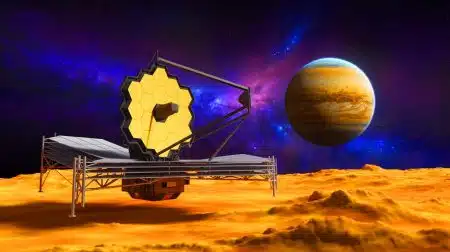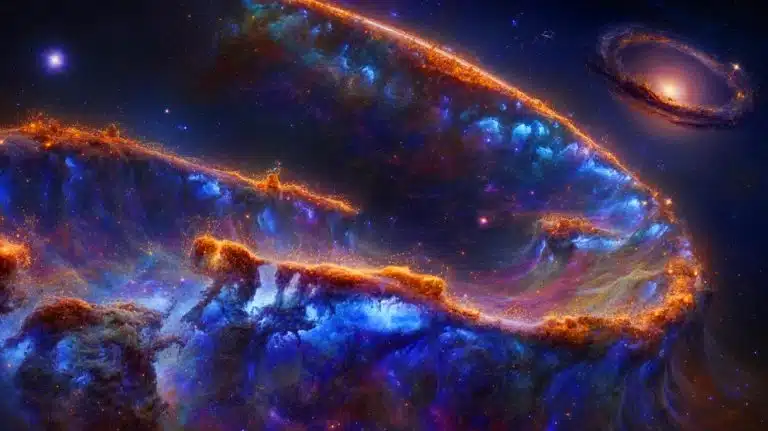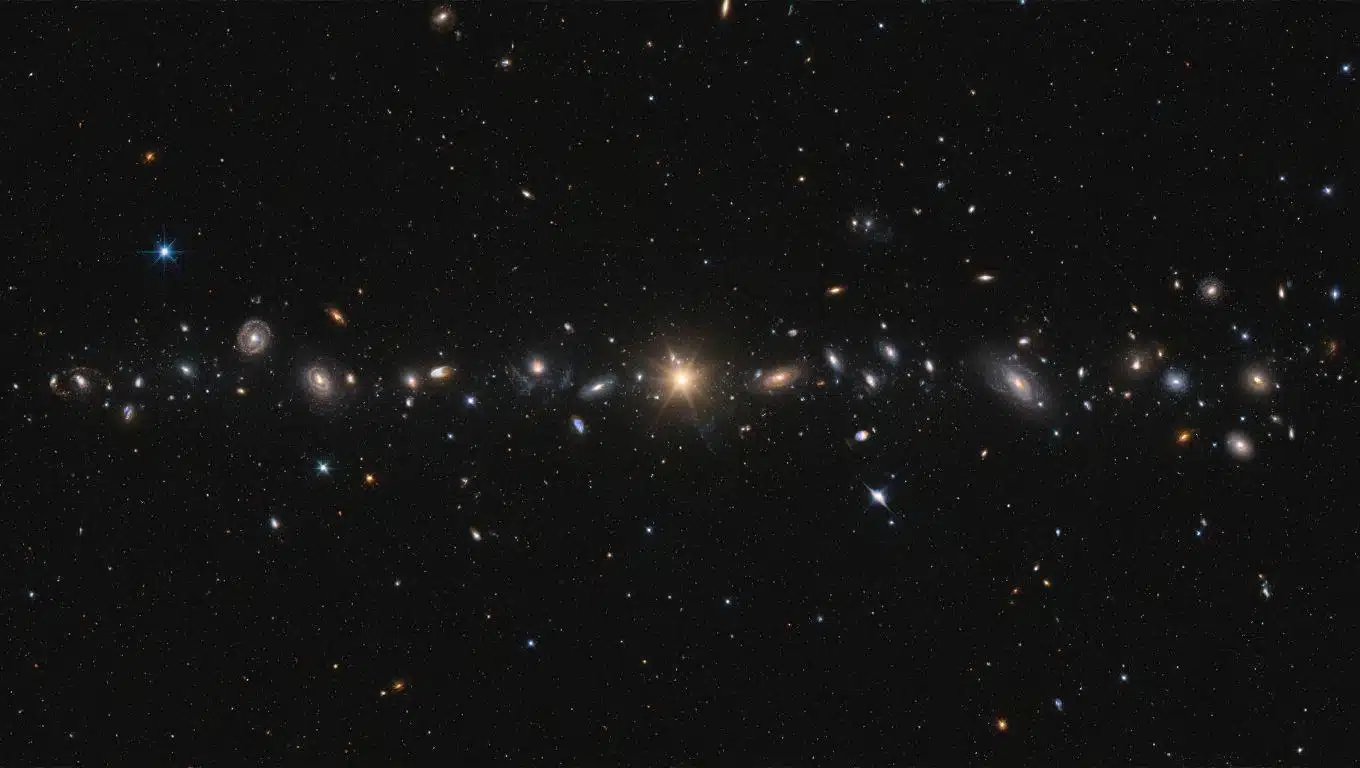| IN A NUTSHELL |
|
The discovery of the Hercules-Corona Borealis Great Wall has sent ripples through the field of cosmology, challenging long-held beliefs about the structure of the universe. This colossal filament of galaxies stretches over 62 billion light-years, making it the largest known structure in the observable universe. Recent research utilizing gamma-ray bursts (GRBs), the most energetic explosions known, has revealed that this structure is even more extensive than previously thought. This finding compels scientists to reconsider the principle of homogeneity and isotropy in cosmology, which has been a cornerstone of our understanding of the universe’s large-scale structure.
Understanding the Role of Gamma-Ray Bursts in Mapping the Universe
Gamma-ray bursts are the universe’s most luminous explosions, occurring when a massive star collapses into a black hole or when two neutron stars collide. These events emit jets of particles at nearly the speed of light, producing gamma and X-rays visible across cosmic distances. By mapping GRBs, astronomers can pinpoint regions where matter is concentrated, even if the galaxies are too distant to be observed directly. This makes GRBs invaluable cosmic lighthouses, illuminating the universe’s vast structures and revealing clusters of galaxies like the Hercules-Corona Borealis Great Wall.
The use of GRBs in mapping cosmic structures has been revolutionary. Their exceptional brightness allows scientists to trace the distribution of matter across the universe more effectively than ever before. This method has provided new insights into the universe’s formation, highlighting areas where galaxies cluster and challenging assumptions about the universe’s uniformity on a grand scale.
The Enormity of the Hercules-Corona Borealis Great Wall
The Hercules-Corona Borealis Great Wall stretches an astounding 62 billion light-years, comprising nearly 10% of the observable universe’s size. This discovery is significant because it contradicts the cosmological principle, which posits that the universe is homogeneous and isotropic on large scales. According to this principle, no structure should exceed 1.2 billion light-years, a limit dictated by the universe’s age. The Great Wall’s size suggests otherwise, indicating that matter may not be evenly distributed across the cosmos.
Scientists are now tasked with revisiting cosmological models to account for this anomaly. The existence of such a massive structure raises questions about how the universe’s early fluctuations led to the formation of galaxies. Some theories propose that larger primordial fluctuations may have played a role, potentially paving the way for alternative models that better fit these observations.
Implications for Cosmology and Future Research
This groundbreaking discovery has significant implications for our understanding of the universe. It challenges the notion of a uniformly distributed cosmos and suggests that current cosmological models may require revision. This has sparked interest in exploring new theoretical avenues that could account for the presence of such enormous structures.
Future missions, like the ESA’s THESEUS, promise to enhance our understanding of cosmic structures. With increased sensitivity, these missions could reveal the full extent of the Hercules-Corona Borealis Great Wall and similar structures. This could provide further insights into the distribution of matter and the universe’s evolution, ultimately reshaping our understanding of the cosmos.
The Path Forward: New Perspectives on Universal Structure
The study of the Hercules-Corona Borealis Great Wall, available on arXiv, opens new avenues for understanding the formation of large cosmic structures. It emphasizes the importance of gamma-ray bursts as tools for exploring the universe’s farthest reaches. As researchers delve deeper into these findings, the cosmic map could be redrawn, offering new perspectives on how galaxies and large-scale structures form and evolve.
The implications of this discovery are vast, prompting scientists to reconsider long-standing cosmological principles. As they continue to explore these uncharted territories, one must wonder: What other cosmic wonders lie hidden in the universe’s vast expanse, waiting to challenge our understanding of the cosmos?
Did you like it? 4.2/5 (23)







Wow, 33 billion light-years? Can we even comprehend distances like that? 🤯
Does this discovery have any implications for dark matter theories?
33 billion light years? Maybe we should focus on our own planet first! 🌍
Is this the biggest cosmic structure we’ll ever find, or just the beginning?
Does the discovery have any implications for SETI and the search for extraterrestrial life?
Gamma-ray bursts sound like the universe’s fireworks! 🎆
Could this have an impact on our understanding of time and space itself?
Absolutely incredible article! Keep up the good work! 🌟
How do scientists predict the future missions like ESA’s THESEUS will impact our understanding?
This is the kind of stuff that makes me want to become an astronomer! 😊
Are there any theories on what could have caused such a massive structure to form?
This is mindblowing! How does this affect our understanding of the Big Bang? 🌌
Will this change how we perceive our place in the universe? 🤔
Can you imagine the kind of telescope we’d need to see this directly? 🔭
How do gamma-ray bursts help in mapping the universe exactly?
What if there are aliens living in that structure? Sci-fi come true! 👽
I’m curious, how do we know this wall is 33 billion light-years and not more?
What are the implications for the cosmological principle now? 🤔
Is the universe really homogeneous and isotropic, or is that just a theory?
Thank you for such an intriguing article. Science always has surprises! 🌌
Does this mean our universe is older than we thought?
Are these findings peer-reviewed yet? I’m curious about the scientific community’s response.
Will this discovery make it into the next sci-fi blockbuster? 🎬
How does this discovery affect our understanding of cosmic evolution?
So, what’s next for cosmologists after this jaw-dropping find?
Can this structure tell us anything about the early universe’s conditions?
I’m amazed at how much we still don’t know about our universe. This is exciting!
Is this going to change my horoscope? 😂
Do we have any idea what this structure is actually made of?
The universe just keeps getting more mysterious! Can’t wait for more discoveries. 🌟
Thank you for sharing such an incredible discovery! Truly fascinating. 🙏
Are there any other structures out there that could be even larger? 🤔
Do we need to revise our textbooks now? This seems huge! 📚
Is it possible that this might affect space travel in the future?
Great read! How do scientists measure such cosmic distances accurately?
I’m skeptical… how can we be sure this isn’t just a mistake in measurement? 🤨